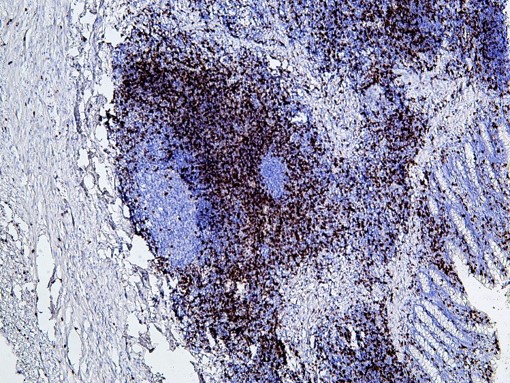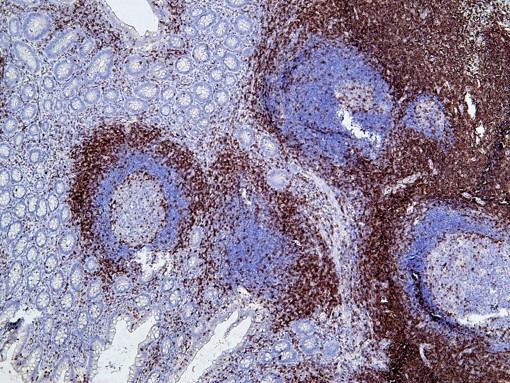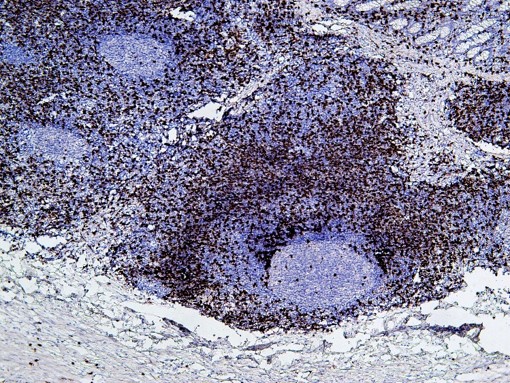Beta-catenin (ABT-Catenin) IHC kit
- Catalog No.:IHCM6675
- Applications:IHC
- Reactivity:Human; Mouse (predicted: Rat)
- Target:
- Catenin-β
- Fields:
- >>Rap1 signaling pathway;>>Wnt signaling pathway;>>Hippo signaling pathway;>>Focal adhesion;>>Adherens junction;>>Signaling pathways regulating pluripotency of stem cells;>>Leukocyte transendothelial migration;>>Melanogenesis;>>Thyroid hormone signaling pathway;>>Cushing syndrome;>>Alcoholic liver disease;>>Alzheimer disease;>>Pathways of neurodegeneration - multiple diseases;>>Bacterial invasion of epithelial cells;>>Salmonella infection;>>Hepatitis C;>>Human cytomegalovirus infection;>>Human papillomavirus infection;>>Kaposi sarcoma-associated herpesvirus infection;>>Pathways in cancer;>>Proteoglycans in cancer;>>Colorectal cancer;>>Endometrial cancer;>>Prostate cancer;>>Thyroid cancer;>>Basal cell carcinoma;>>Breast cancer;>>Hepatocellular carcinoma;>>Gastric cancer;>>Arrhythmogenic right ventricular cardiomyopathy;>>Fluid shear stress and atherosclerosis
- Gene Name:
- CTNNB1 CTNNB OK/SW-cl.35 PRO2286
- Protein Name:
- Catenin-β;b-catenin;Beta catenin;Beta-catenin;Cadherin associated protein;Catenin (cadherin associated protein), beta 1, 88 kDa;Catenin beta 1;Catenin beta-1;CATNB;CHBCAT;CTNB1_HUMAN;CTNNB;CTNNB1;DKFZ
- Human Gene Id:
- 1499
- Human Swiss Prot No:
- P35222
- Immunogen:
- Synthesized peptide derived from human Beta-catenin AA range: 700-781
- Specificity:
- This antibody detects endogenous levels of human Catenin beta-1 (Beta-catenin). Heat-induced epitope retrieval (HIER) TRIS-EDTA of pH9.0 was highly recommended as antigen repair method in paraffin sec
- Source:
- Mouse, Monoclonal/IgG2b, Kappa
- Purification:
- The antibody was affinity-purified from mouse ascites by affinity-chromatography using specific immunogen.
- Storage Stability:
- 2°C to 8°C/1 year
- Other Name:
- CTNNB1;CTNNB;OK/SW-cl.35;Catenin beta-1;Beta-catenin
- Background:
- The protein encoded by this gene is part of a complex of proteins that constitute adherens junctions (AJs). AJs are necessary for the creation and maintenance of epithelial cell layers by regulating cell growth and adhesion between cells. The encoded protein also anchors the actin cytoskeleton and may be responsible for transmitting the contact inhibition signal that causes cells to stop dividing once the epithelial sheet is complete. Finally, this protein binds to the product of the APC gene, which is mutated in adenomatous polyposis of the colon. Mutations in this gene are a cause of colorectal cancer (CRC), pilomatrixoma (PTR), medulloblastoma (MDB), and ovarian cancer. Alternative splicing results in multiple transcript variants. [provided by RefSeq, Aug 2016],
- Function:
- disease:A chromosomal rearrangement involving CTNNB1 may be a cause of salivary gland pleiomorphic adenomas (PA) [181030]. Pleiomorphic adenomas are the most common benign epithelial tumors of the salivary gland. Translocation t(3;8)(p21;q12) with PLAG1.,disease:Activating mutations in CTNNB1 have oncogenic activity resulting in tumor development. Somatic mutations are found in various tumor types, including colon cancers, ovarian and prostate carcinomas, hepatoblastoma (HB), hepatocellular carcinoma (HCC). HBs are malignant embryonal tumors mainly affecting young children in the first three years of life.,disease:Defects in CTNNB1 are a cause of medulloblastoma (MDB) [MIM:155255]. MDB is a malignant, invasive embryonal tumor of the cerebellum with a preferential manifestation in children.,disease:Defects in CTNNB1 are a cause of pilomatrixoma (PTR) [MIM:132600]; a common benign skin tum
- Subcellular Location:
- Membranous
- Expression:
- Expressed in several hair follicle cell types: basal and peripheral matrix cells, and cells of the outer and inner root sheaths. Expressed in colon. Present in cortical neurons (at protein level). Expressed in breast cancer tissues (at protein level) (PubMed:29367600).
- June 19-2018
- WESTERN IMMUNOBLOTTING PROTOCOL
- June 19-2018
- IMMUNOHISTOCHEMISTRY-PARAFFIN PROTOCOL
- June 19-2018
- IMMUNOFLUORESCENCE PROTOCOL
- September 08-2020
- FLOW-CYTOMEYRT-PROTOCOL
- May 20-2022
- Cell-Based ELISA│解您多样本WB检测之困扰
- July 13-2018
- CELL-BASED-ELISA-PROTOCOL-FOR-ACETYL-PROTEIN
- July 13-2018
- CELL-BASED-ELISA-PROTOCOL-FOR-PHOSPHO-PROTEIN
- July 13-2018
- Antibody-FAQs
- Products Images
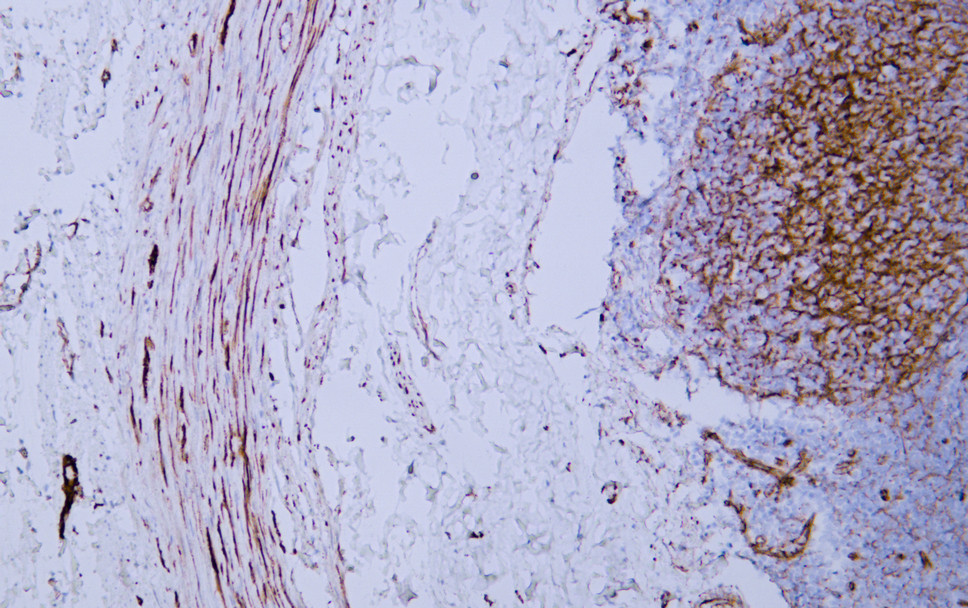
- Human appendix tissue was stained with anti-Beta-catenin(ABT-Catenin) antibody.
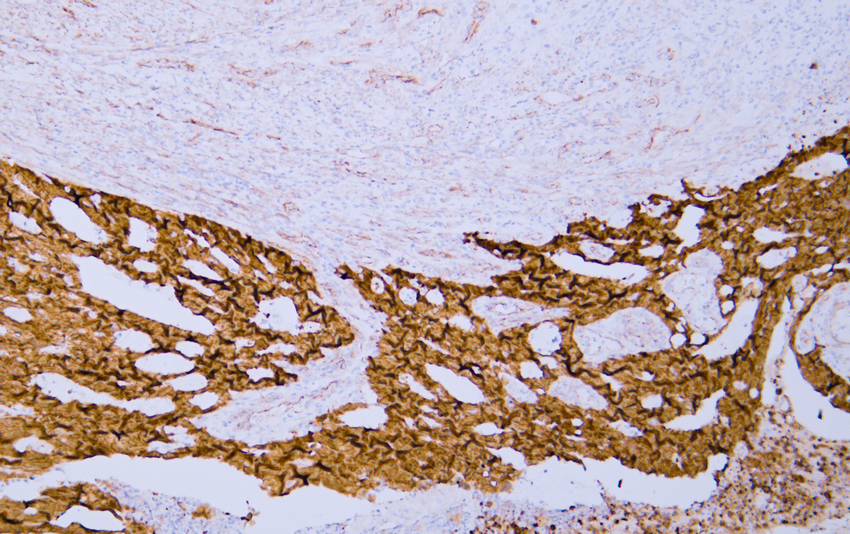
- Human colon carcinoma tissue was stained with anti-Beta-catenin(ABT-Catenin) antibody.
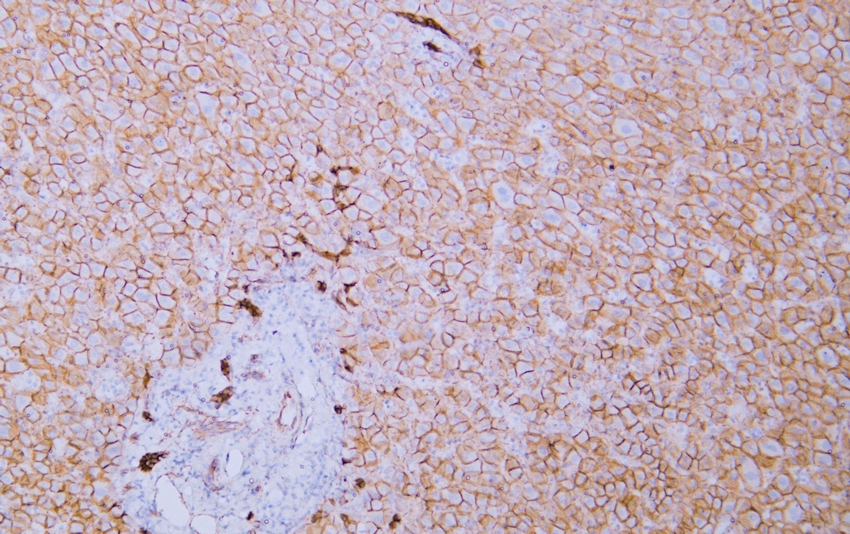
- Human liver tissue was stained with anti-Beta-catenin(ABT-Catenin) antibody.
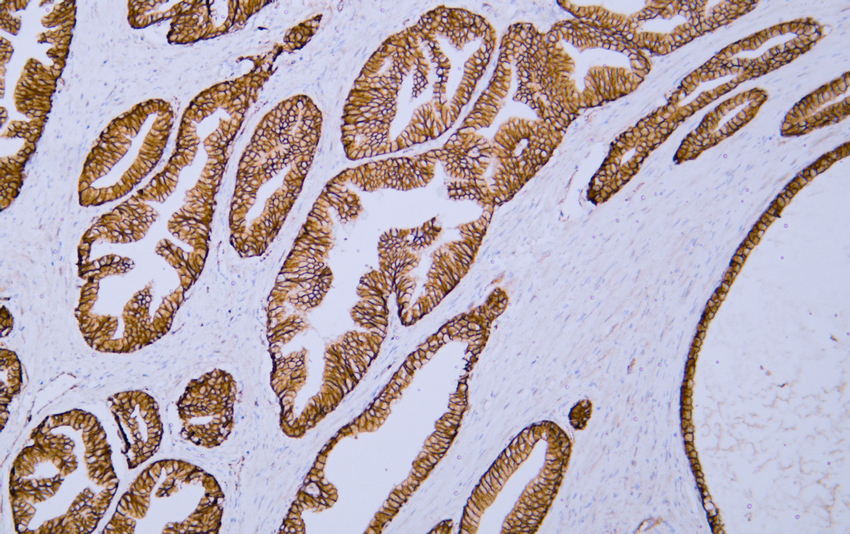
- Human prostate tissue was stained with anti-Beta-catenin(ABT-Catenin) antibody.
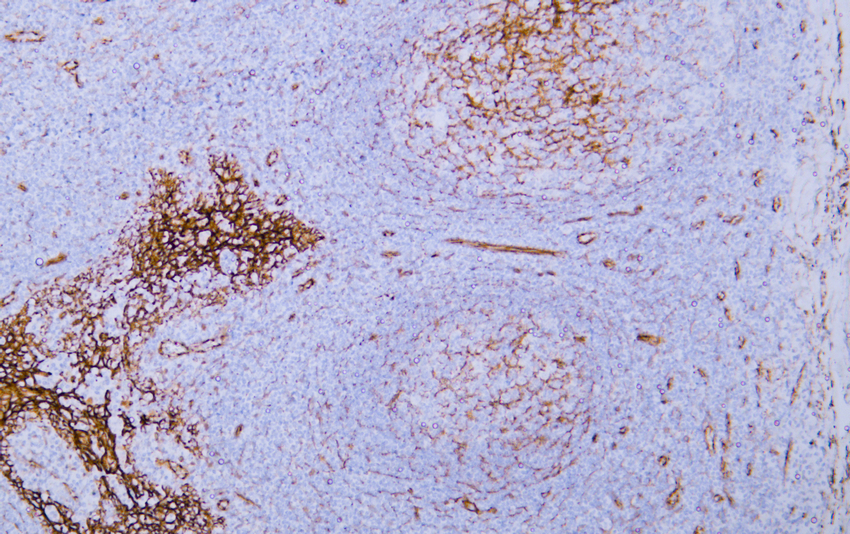
- Human tonsil tissue was stained with anti-Beta-catenin(ABT-Catenin) antibody.

- Fluorescence multiplex immunohistochemical analysis of normal human appendix tissue (formalin-fixed paraffin-embedded section).The section was incubated in 3 rounds of staining; in the order of Actin .( Catalog no:YM6566 1/200 dilution), Beta-catenin .(Catalog no: YM6675 1/200 dilution), MUM1. (Catalog no:YM6762 1/200 dilution),each using a separate fluorescent tyramide signal amplification system : Treble-Fluorescence immunohistochemical mouse/rabbit kit Catalog NO: RS0035 (pH9.0)
